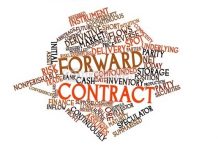Do you sometimes wonder what is more important: a rigid trading plan or a flexible approach towards entries and exits?
This article explains why a trading plan is indeed a must but certainly not enough to be fully prepared for trading the financial markets.
Discover how a mixture of preparedness and adjustments is the ideal balance when approaching your trading.
Is a Trading Plan Enough for Trading?
As you probably know from either Nenad or myself, developing a trading plan is a critical and necessary step towards developing a consistent approach for trading the financial markets.
There is just one problem: plans will never fully address all the different scenarios and situations you, as a trader, will face. The same is, in fact, true for everything in life – from business to relationships, from battles to sports.
Dwight D. Eisenhower, WWII general and later on US President, expressed this quite strikingly by saying “in preparing for battle I have always found that plans are useless, but planning is indispensable”.
What does this quote mean? In my view, having a starting point (plan) is useful, but it is even more important to be agile and prepared for changes along the way.
How Do You Add Vision to Your Trading Plan?
Trading is of course different than wars. For trading purposes, the trading plan is a vital starting point because you need to develop a firm vision. This famous quote explains it well: failing to plan is planning to fail.
Why is vision critical? The benefit of a trading plan is that it narrows a trader’s focus and reduces the options, which is positive because traders should fully focus on trade set-ups with higher probabilities.
Let’s face it: would you really want to analyse the charts and think about entering every minute? No, because that leads to decision fatigue. Making new decisions continuously, case by case, saps your willpower, which often leads to bad or undesired outcomes.
Traders should use their trading plan as a rigid approach to the markets so that they remain fully focussed on:
- finding the best set-ups;
- implementing proper risk management;
- thereby reaching their long-term trading goals.
On the other hand, there is more to trading than just creating a trading plan. Traders need to actively work on improving their trading process.
Once there is a trading plan on the table, traders should not lean back and think that this is the end of their learning curve or development.
Go Beyond the Trading Plan
The number one focus for traders is finding the best entries. There is no other part of the trading plan that receives as much attention as trade set-ups and entries. And it’s probably too much…
Please do understand me correctly: finding set-ups with an edge is an important part of every trading plan…
But my main point is this: entries are not the final step.
Traders should not blame themselves for this bias. According to author Rolf Dobelli, who wrote The Art of Thinking Clearly, humans in general tend to overestimate the set-up.
In his 2017 book – The Art of the Good Life – Dobelli goes on to explain that “we overestimate the role of set-up and systematically underestimate the role of correction”. (Chapter 2, page 6).
Practically, this means that we overemphasise the starting phase. We become more critical about our initial plans and want to make sure that everything is “perfect”.

Source: EUR/USD 4-hour chart from 3 January 2018 to 24 January 2018 showing how important it is not to add too many tools and indicators. Price action with a few indicators is in my view the best balance.
Examples of How Perfect Planning Fails
The main problem is that nobody can account for all the factors that might impact our plan. When you try to plan for all possible scenarios and situations, the plan becomes self-defeating.
There are tons of examples around us. A classic mistake is when a business relies too much on creating a perfect product and then gets stuck in an endless loop of finding the best improvement.
Or a sports team might have the best superstars, but another team might win the championship because they worked harder during the season to fine-tune their playing style.
A key solution is not to get stuck for too long in the beginning, but rather remain focussed on improvements and find a way to continuously adjust and improve.
If you are interested in knowing more about optimising this feedback process, I recommend reading the books The Lean Startup (2011) by Eric Ries and Sprint: How to Solve Big Problems and Test New Ideas in Just Five Days (2016) by B. Kowitz and J. Knapp.
Trading Requires Both a Plan and Planning
What’s the impact on trading? Traders often get stuck in a never-ending loop with trying to find the a perfect entry method and or trading system. It is important to create a sturdy trading plan… but remember that this is just the start.
I put an emphasis on these 6 tips for trading:
- Use your trading plan as an important starting point and road map;
- Keep learning from your trades and your mistakes;
- Make adjustments to the trading plan when needed;
- Be ready that you might need to take decisions that are not covered by your plan;
- The entry is only one part of the trade: make sure that your trade management plan is just as solid as your entry plan;
- Once a trade is open, keep in mind that the goal of trade management is to keep losses short and let winners run.
Now that you know that all of us overestimate the role of set-up and systematically underestimate the role of correction, the importance of trade management and education, such as the Forex 101 beginner’s trading course, Zero to Hero trading course, and our Master trading webinars, becomes even more clear.
Wishing you a happy week of trading,
Chris Svorcik


















